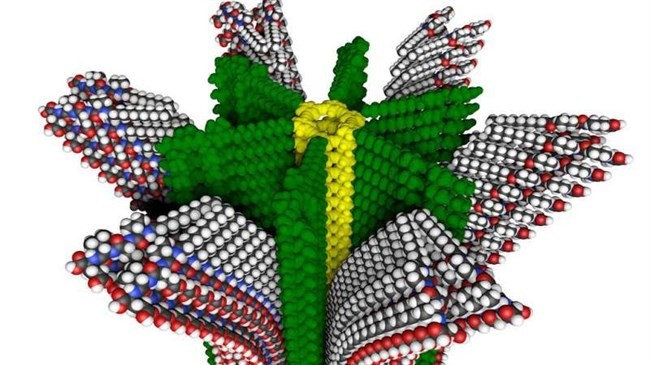Completely new kind of polymer developed

Imagine a polymer with removable parts that can deliver something to the environment and then be chemically regenerated to function again. Or a polymer that can lift weights, contracting and expanding the way muscles do.
These functions require polymers with both rigid and soft nano-sized compartments with extremely different properties that are organized in specific ways. A completely new hybrid polymer of this type has been developed by Northwestern University researchers that might one day be used in artificial muscles or other life-like materials; for delivery of drugs, biomolecules or other chemicals; in materials with self-repair capability; and for replaceable energy sources, reddit.com wrote.
"We have created a surprising new polymer with nano-sized compartments that can be removed and chemically regenerated multiple times," said materials scientist Samuel I. Stupp, the senior author of the study.
"Some of the nanoscale compartments contain rigid conventional polymers, but others contain the so-called supramolecular polymers, which can respond rapidly to stimuli, be delivered to the environment and then be easily regenerated again in the same locations. The supramolecular soft compartments could be animated to generate polymers with the functions we see in living things," he said.
The hybrid polymer cleverly combines the two types of known polymers: those formed with strong covalent bonds and those formed with weak non-covalent bonds, well known as ‘supramolecular polymers’. The integrated polymer offers two distinct ‘compartments’ with which chemists and materials scientists can work to provide useful features.
"Our discovery could transform the world of polymers and start a third chapter in their history: that of the 'hybrid polymer’," Stupp said. "This would follow the first chapter of broadly useful covalent polymers, then the more recent emerging class of supramolecular polymers.
"We can create active or responsive materials not known previously by taking advantage of the compartments with weak non-covalent bonds, which should be highly dynamic like living things. Some forms of these polymers now under development in my laboratory behave like artificial muscles," he said.
Polymers get their power and features from their structure at the nanoscale. The covalent rigid skeleton of Stupp's first hybrid polymer has a cross-section shaped like a ninja star. In between the arms is the softer 'life force' material. This is the area that can be animated, refreshed and recharged, features that could be useful in a range of valuable applications.